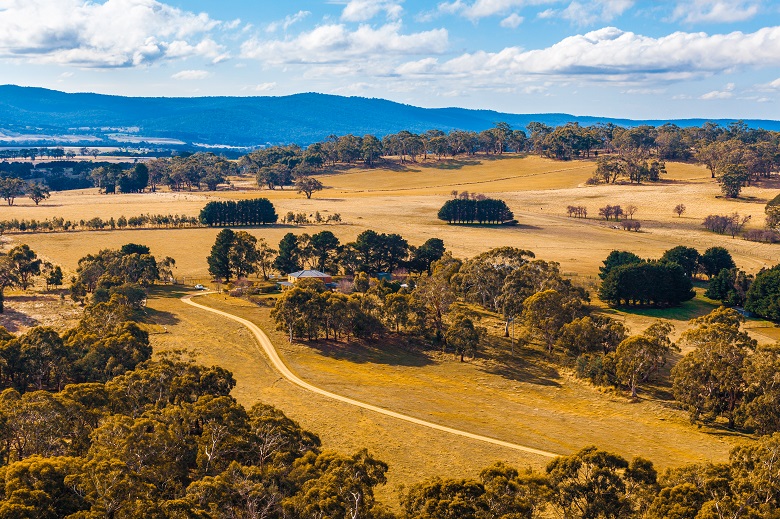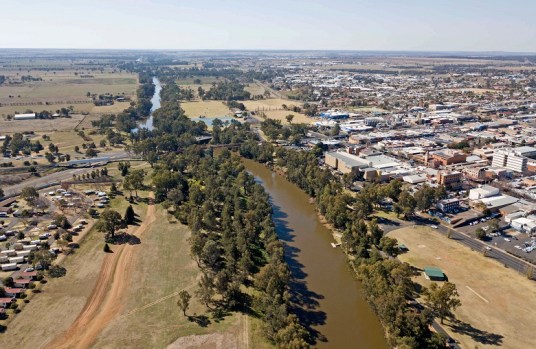
Governments need to do more to attract international migrants to regional parts of the country and encourage their participation in the local economy and community, a new report says.
The Regional Australia Institute says with the nation’s population hitting 25 million two decades earlier than predicted, regional areas hold a key to managing population growth and solving urban congestion.
RAI’s National Population Plan for Regional Australia, released on Thursday, says governments need to provide incentives for migrants to relocate, and redistribute nfrastructure spending to make regional areas more attractive.
Cities such as Bendigo, Mount Gambier, Orange and Toowoomba have increased their populations and revitalised local communities by attracting overseas-born residents, the report says.
Attracting migrants
Although the major cities are a gateway for international migrants, these groups already play a key role in maintaining populations in small regional communities.
In 2016, 151 LGAs in regional and remote areas increased their overseas-born population while decreasing their Australia-born population, and 128 increased both.
In Mingoola, in northern NSW, nearly 30 African migrants have moved to the town, providing farmers with a new workforce and building an emerging garlic enterprise, while the Victorian town of Nhill has become home to 200 Karen migrants.
Tenterfield Shire Mayor Peter Petty told Government News Mingoola’s new international residents, originating from four African nations, relocated from Sydney and Newcastle after members of the local community made contact with the department of immigration.
Thanks to them, the local school has been able to stay open, farmers have a new workforce and the community is developing a new business enterprise.
“It’s been the greatest story,” Cr Petty said, adding he meets with the families regularly when they come to Tenterfield. “They’ve been really well received by the community and we’ve been with the community all the way with this.”
Other places benefiting from an injection of overseas-born newcomers include Pyramid Hill in NSW, Nobby in Qld, Dalwallinu in WA and Hamilton, Victoria.
However, while international migration is responsible for 60 per cent of national population growth, only ten per cent of new arrivals between 2011-2016 settled in a regional area, RAI says.
“Active strategies to match migrant workers with employment needs are working well in small communities and this can be enhanced,” the report says.
It recommends removing barriers to secondary migration of international migrants and funding to support community initiates to assist their settlement.
What local government can do
- Identify local labour need and gauge community support
- Provide resources for local capacity building and upskilling
- Establish a “matchmaking” system for migrants and employers
- Create and promote information resources
Regional Australia is currently home to almost 9 million people and more than 400,000 Australians have migrated to regional areas in the past five years, the RAI report says.
But it says infrastructure spending is weighted to solve problems in capital cities rather than enhancing liveability in regional towns and cities, and this needs to be reversed.
“In order for regions to continue to grow and attract new residents, there needs to be a more equitable investment in their infrastructure and services to build appealing, adaptable and viable communities that people want to live in and contribute to in the long term,” the report says.
“Overall, our Plan should challenge the assumption that Australia is best to deal with future population growth through continuing expansion of our major cities,” RAI co-CEO Dr Kim Houghton said.
Regional migration at a glance
- 400,000 capital city residents moved to a regional area between 2011-16
- Movement from capital cities to regional Australia peaks in the 30-39 and 60-69 age groups
- International migration is responsible for 60 per cent of population growth
- Ten per cent of new arrivals between 2011-2016 settled in a regional area
- Regional Australia is home to almost one third of Australia’s population
- In 2016, 151 LGAs in regional and remote areas increased their overseas born while decreasing their Australian born population and 128 increased both
Comment below to have your say on this story.
If you have a news story or tip-off, get in touch at editorial@governmentnews.com.au.
Sign up to the Government News newsletter.

